
On 9 May 1914, Paul-Louis-Toussaint Héroult died, the French chemist who invented the electric-arc furnace, widely used in making steel; and, independently of the simultaneous work of Charles M. Hall of the United States, devised the electrolytic process for separating aluminium from its ore. The electrolytic process made low-priced aluminium available for the first time.
Aluminium and its alloys are now so widely available, it is worth reflecting on how only relatively recently (in the history of man's use of metals) it was gained from its ore in a cost-efficient way.
In an 1891 article the Scientific American published the text of a Lecture on Aluminum delivered in January 1886. Because this lecture (by J.A. Price) came one month before Charles Hall produced his first beads of aluminium, it gives an interesting insight into the history of the metal, and how it was viewed before the electrolytic process so drastically dropped its cost of production.

On 9 May 1873, Howard Carter was born, the British archaeologist whose work led to making one of the richest and most celebrated contributions to Egyptology: the discovery of the the tomb of King Tutankhamen. Today's book pick is: The Discovery of the Tomb of Tutankhamen (Egypt), by Howard Carter, A. C. Mace. This book gives the only published account that he himself wrote of the finding of the tomb and clearing of the Antechamber. It recounts the painstaking, step-by-step process of excavation, and the wonders of the treasure-filled inner chamber.
With 106 on-the-spot photographs that depict the phases of the discovery and the scrupulous cataloging of the treasures, the book is written like a diary, keeping the reader wondering what's in store as the days pass - and all in the words of the archaeologist himself.
It is available from Amazon, typically about New from $1.99. Used from $1.50. (As of earlier time of writing - subject to change.)
| no image | The present knowledge of the biochemical constitution of the cell was achieved largely by the use of destructive methods. Trained in the tradition of the theory of solutions, many a biochemist tends, even today, to regard the cell as a “bag of enzymes”. However, everyone realizes now that the biochemical processes studied in vitro may have only a remote resemblance to the events actually occurring in the living cell. |
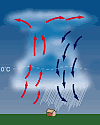 | The astronomer is, in some measure, independent of his fellow astronomer; he can wait in his observatory till the star he wishes to observe comes to his meridian; but the meteorologist has his observations bounded by a very limited horizon, and can do little without the aid of numerous observers furnishing him contemporaneous observations over a wide-extended area. |
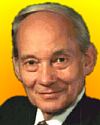 | A theory has only the alternative of being right or wrong. A model has a third possibility: it may be right, but irrelevant. |
| Before you look at today's web page, see if you can answer some of these questions about the events that happened on this day. Some of the names are very familiar. Others will likely stump you. Tickle your curiosity with these questions, then check your answers on today's web page. | |
| Births | |
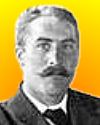 | On 9 May 1873, the British archaeologist was born who made one of the richest and most celebrated contributions to Egyptology: the discovery (1922) of the largely intact tomb of King Tutankhamen. Who was the person who provided the funding for the excavation work? |
| Deaths | |
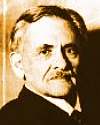 | A.A. Michelson (1852-1931), a distinguished American physicist won a Nobel Prize “for his optical precision instruments and the spectroscopic and metrological investigations carried out with their aid.” With a highly accurate interferometer he made a notable precise measurement. What notable measurement did Michelson make with new precision? |
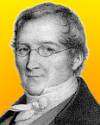 | Joseph Louis Gay-Lussac, a French scientist (1778-1850) who developed techniques of quantitative chemical analysis, confirmed that iodine was an element, discovered cyanogen, improved the process for manufacturing sulphuric acid, prepared potassium and boron (1808). He made two balloon ascents to study the atmosphere. All of which are interesting, but not the reason for which he is most remembered - a significant law in chemistry. State the significant law known by his name. |
| Events | |
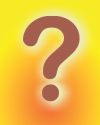 | In 1944, the first U.S. “bank” for a certain part of the human body was established through the efforts of New York City doctors, who established the project at New York Hospital. What did the “bank” collect? |
 | In 1936, the maiden voyage of a new way to cross the Atlantic left Europe and arrived in New Jersey a little over 61 hours later. What form of transport made the voyage? |
 | In 1882, a U.S. patent was issued for what is now a classic design of the medical instrument, used extensively by doctors ever since, especially for check-ups involving the heart and lungs. What was this instrument? |
Fast answers for the previous newsletter for May 8: barbed wire • new ways to culture yeast • Zoo Quest • Antoine-Laurent Lavoisier • blooms of reddish algae • Coca-Cola • metre.
 If you enjoy this newsletter, the website, or wish to offer encouragement or ideas, please send feedback by using your mail reader Reply button.
If you enjoy this newsletter, the website, or wish to offer encouragement or ideas, please send feedback by using your mail reader Reply button. Your click on a Facebook, StumbleUpon, or other social button on the site webpages is also a welcome sign of appreciation. Thank you for using them.
© This newsletter is copyright 2020 by todayinsci.com. Please respect the Webmaster's wishes and do not put copies online of the Newsletter — or any Today in Science History webpage. (If you already have done so, please remove them. Thank you.) Offline use in education is encouraged such as a printout on a bulletin board, or projected for classroom viewing. Online, descriptive links to our pages are welcomed, as these will provide a reader with the most recent revisions, additions and/or corrections of a webpage. For any other copyright questions, please contact the Webmaster by using your mail reader Reply button.
--
If you do not want to receive any more newsletters, Unsubscribe
To update your preferences and to unsubscribe visit this link
Executive Real Estate Business Class
-
"It was like a man with wings. It wasn't like anything you'd see on TV or in a monster movie." ...
About the publisher
Search This Blog
Blog Archive
-
▼
2020
(1542)
-
▼
May
(194)
- FAMILY: Building kindness in a tough time
- What is history's biggest mystery?
- On This Day for May 31 - Adolf Eichmann hanged, Cl...
- Globalist Race War? because COVID Coup exposed? ...
- Newsletter for Sunday 31 May.
- May 31: Battle of Jutland, Earthquakes and the Clo...
- BREAKING NEWS: SpaceX launches new era of spacefli...
- The Compass: Spain
- On This Day for May 30 - Joan of Arc burned at the...
- Newsletter for Saturday 30 May.
- CORONAVIRUS SPECIAL EDITION: The best way to clean...
- May 30: Voltaire the Rebel
- This Week's Roundup Top Ten from History News Network
- On This Day for May 29 - Mount Everest summit reac...
- Newsletter for Friday 29 May.
- You & your loved ones can be Involuntarily Quarant...
- YOUR WEEKLY ESCAPE: The famous Viking warrior who ...
- May 29: Return of Charles II, Mt. Everest Knocked ...
- Alone Returns With a $1,000,000 Prize
- On This Day for May 28 - Amnesty International fou...
- The secular utilitarian U.N. New World Order has a...
- Newsletter for Thursday 28 May.
- May 28: Spanish Armada Sets Sail, The Indian Remov...
- SCIENCE: Restoring an American frontier
- Breaking News from History News Network
- On This Day for May 27 - Founding of St. Petersbur...
- Christian History Magazine: Covid-19 Response
- Newsletter for Wednesday 27 May.
- Learn whose pulling the strings what the media ha...
- May 27: Habeaus Corpus, Priam's Treasure and Dunkirk
- TRAVEL: Find the secrets to your backyard
- Journey with Ancient Explorers when you subscribe ...
- On This Day for May 26 - Martin Luther declared a ...
- Newsletter for Tuesday 26 May.
- May 26: Start of the Dow Jones Index, Middle Easte...
- HISTORY: The tumultuous past of the U.S. Postal Se...
- A Memorial Day Offer from Britannica!
- Grant Premieres Tonight!
- New This Week On History News Network
- On This Day for May 25 - U.S. Constitutional Conve...
- Economic Re-Opening is a Fakeout + CDC numbers rev...
- Newsletter for Monday 25 May.
- May 25: On This Day in History
- FAMILY: Moving past a big disappointment
- The real history behind WW2 film 'Greyhound' | Ann...
- On This Day for May 24 - Opening of the Brooklyn B...
- Newsletter for Sunday 24 May.
- Vaccine: 20 percent Serious Injury after skipping ...
- May 24: Methodism, Morse Code and the Bridge that ...
- The Compass: Argentina
- Your New Favorite Podcast
- On This Day for May 23 - Tibet annexed by China, C...
- Watch all the talks from BBC History Magazine's Me...
- Newsletter for Saturday 23 May.
- Dolores Cahill PhD expert in molecular genetics an...
- CORONAVIRUS SPECIAL EDITION: There's a reason so m...
- May 23: The Crazy Trigger for the Thirty Years War
- PHOTOGRAPHY: Capturing 59 years of human spaceflight
- How Booze, Drugs, And A Woman Named June Destroyed...
- A Memorial Day Sale for Everyone!
- The Roundup Top Ten from History News Network
- On This Day for May 22 - Roman Emperor Constantine...
- Newsletter for Friday 22 May.
- YOUR WEEKLY ESCAPE: What do the world's happiest p...
- May 22: The World's 1st Atlas is Published and WWI...
- ANIMALS: Saving the pangolin
- On This Day for May 21 - First nonstop solo transa...
- May 21: The 1st Transatlantic Flights and some Mem...
- Ron Panzer interview will air on Friday on Trunew...
- Grant: Watch the Extended Opening Scene
- SCIENCE: Food supply challenges prompt creativity
- Breaking News from History News Network
- On This Day for May 20 - U.S. Homestead Act signed...
- Newsletter for Wednesday 20 May.
- Ron Panzer interview: Trunews.com Today at 3 pm E...
- May 20: Vasco da Gama, Shakespeare and My Fair Lady
- TRAVEL: The promise of happiness, even now
- Inspire Their Curiosity w/ Nat Geo Kids Magazine
- On This Day for May 19 - Ringling Bros. Circus for...
- When we learn what the vaccine will do to everyone...
- Newsletter for Tuesday 19 May.
- May 19: On This Day in History
- See The Most Accurate Map In The World
- HISTORY: At 110 years old, he made our cover
- New This Week on History News Network
- On This Day for May 18 - Eruption of Mount St. Hel...
- Newsletter for Monday 18 May.
- May 18: On This Day in History
- FAMILY: Helping your kids after their troubling dr...
- What did Queen Victoria really look like? | Mediev...
- On This Day for May 17 - School segregation outlaw...
- Newsletter for Sunday 17 May.
- Cardiologist states Hydroxychloroquine side-effect...
- May 17: NYSE Forms and the Watergate Hearings Begin
- The Compass: California
- On This Day for May 16 - Warsaw Ghetto Uprising su...
- Newsletter for Saturday 16 May.
- May 16: Dambusters and Stem Cells
- CORONAVIRUS SPECIAL EDITION: This map shows where ...
- The dream to photograph 10,000 vulnerable animal s...
-
▼
May
(194)
-
Blogroll
-
About
HistoryFact










0 comments:
Post a Comment